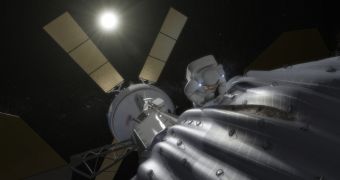The American space agency has recently announced the initiation of a new program, called the Asteroid Grand Challenge, wherein it will try to get the international astronomical community to track asteroids and other space rocks around our planet that can be classified as near-Earth objects (NEO).
The goal is to prevent events such as the impactor that blew up over Chelyabinsk, Russia, on February 15, 2013, from occurring ever again. The space rock that injured nearly 1,500 people entered our atmosphere undetected, and was only observed moments before blowing up.
The impact highlights how ill-prepared humanity is for any potential NEO-related catastrophe. NASA is now seeking to address this issue in two ways, through international collaborations, and through developing the Asteroid Redirect Mission (ARM).
ARM would work by capturing potentially-hazardous objects, and then redirecting them into a safe orbit around the Moon-Earth system. In addition to keeping our planet safe, this approach would also contribute to furthering our understanding of asteroids, since astronauts will be able to explore them.
The US Space Policy calls for NASA to send a manned crew to an asteroid by 2025, so the ARM could come in handy for planning such an endeavor. Officials with the space agency said recently that they planned to use the Space Launch System rocket and Orion capsule for this mission.
NASA is also hopeful that this effort will contribute to gathering the type of data that are needed to improve the survivability prospects of the manned Martian missions the agency is mandated to carry out by the 2030s. These flights will also use the SLS/Orion combo.
Inserting asteroids artificially into Earth's orbit for in-depth studies has been a long-term goal for space explorers. Current technology may be advanced enough to finally allow for that dream to come true.
In addition to boasting about stepping on a space rock as old as our planet, future astronauts will also be able to conduct scientific studies and collect samples from captured asteroids. This could contribute greatly to our understanding of how Earth, the Moon, and the entire solar system formed.
“There are a lot of asteroids out there, and there are a lot of dedicated people down here, looking for them. You put the two together and it's only a matter of time before we find some space rocks that fit our needs,” says NEO Program Office senior scientist Paul Chodas, who is based at the NASA Jet Propulsion Laboratory in Pasadena, California.

 14 DAY TRIAL //
14 DAY TRIAL //